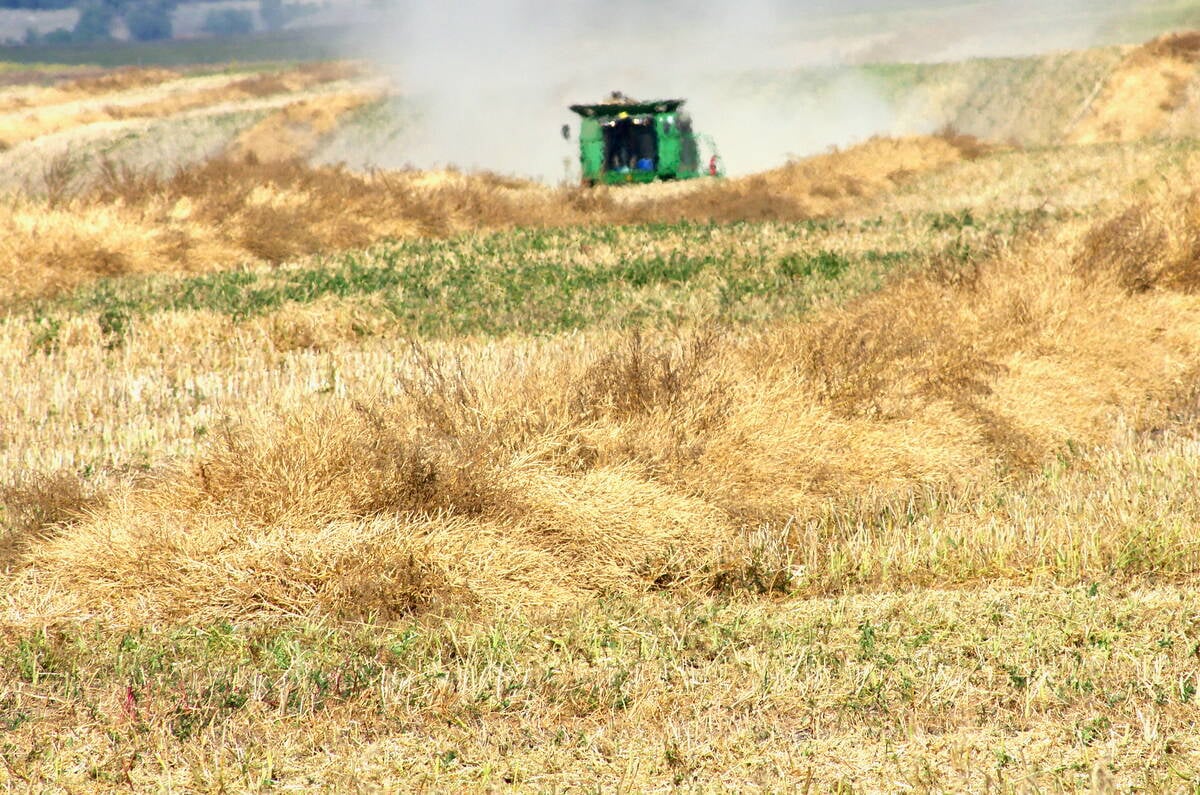Biofuel has been trumpeted as the answer to some of the world’s most pressing pollution problems, but there is a growing concern that the rapid growth of the ethanol and biodiesel industries could create more environmental headaches than they resolve.
A June 7 report issued by Worldwatch Institute, an environmental research organization, says biofuel production has doubled since 2001. Output surpassed 670,000 barrels per day in 2005, the equivalent of one percent of the global transportation fuel market.
“Co-ordinated action to expand biofuel markets and advance new technologies could relieve pressure on oil prices while strengthening agricultural economies and reducing climate-altering emissions,” said Worldwatch president Christopher Flavin.
Read Also

Manitoba searches for Plan B on canola oil exports
A new report explores Manitoba’s current canola oil trade and possible alternative markets to the U.S.
But the report comes with a caveat that there are significant agricultural and ecological risks associated with the large-scale adoption of biofuel.
“It is essential that government incentives be used to minimize competition between food and fuel crops and to discourage expansion on to ecologically valuable lands,” said Worldwatch biofuel project manager Suzanne Hunt.
North American biofuel commodity groups say the threat to the food supply is overblown because farmers are becoming more efficient producers.
Tyler Bjornson, vice-president of corporate affairs with the Canola Council of Canada, said producers are heading into the 2006-07 crop with 2.5 million tonnes of canola carryover, a supply that would be sufficient to meet a five percent biofuel mandate without any additional production.
He said the reasonable levels of renewable fuels being discussed in this country will allow the industry to easily meet the needs of both the food and fuel sectors.
“We wouldn’t be shorting either of them.”
Through a combination of improved genetics, better agronomics, higher oil content and increased acreage, the council is confident that by 2015 production will exceed 14 million tonnes, up from 9.7 million tonnes in 2005.
Five million tonnes of that will be for food use, 6.5 million tonnes for export and 2.5 million tonnes for biodiesel production.
Bjornson said the increased acreage will come at the expense of other commodities, not ecologically sensitive lands. That’s because new varieties will allow canola to be grown in nontraditional areas such as southern Saskatchewan.
“It’s not as though we’re talking about breaking new ground,” he said.
The U.S. National Corn Growers Association estimates its farmers will be producing 381 million tonnes of corn by 2015, up from 279 million tonnes in 2005.
The group figures a third of the crop will be used to produce ethanol 10 years down the road, which leaves plenty for food and feed purposes.
“U.S. corn yields have doubled since 1980 and are on a trend line to increase by an average of 2.0-2.5 percent per year, adding an additional (four million tonnes) a year with no increase in acres,” said NCGA president Gerald Tumbleson.
Despite that capability the association is still forecasting 86 million acres of corn by 2011, up from 81.8 million acres in 2005.
In the literature where it attempts to diffuse the fuel-at-the-expense-of-food-debate, the group said as ethanol demand continues to grow, some acreage may be shifted to corn away from crops like soybean and to a lesser degree cotton and wheat.
“It is also important to note that some portion of the 35 million acres currently dedicated to the Conservation Reserve Program could be brought back into production,” said the association.
That is exactly the kind of talk that is ruffling the feathers of groups like Birdlife International. Last week the environmental agency warned the European Union that biofuel could cause more environmental damage than the conventional fuels they replace.
Meeting the EU’s target of replacing 5.75 percent of fossil fuels with biofuel by 2010 would require 14-27 percent of all EU agricultural land.
Birdlife contends that is not feasible, so in order to achieve its goal the EU would have to rely on imports of fuel from places like Brazil, which makes its ethanol from sugar cane, a crop that threatens environmentally sensitive rainforest land.
“Europe must act now or biofuels could spell disaster for biodiversity worldwide,” said Birdlife’s EU policy officer Ariel Brunner.
The group said the unmanaged conversion of land into biofuel production in Europe has already threatened two species of bird, the little bustard in France and the red kite in Germany.
“Unless we produce biofuels sustainably we’ll end up with more energy-intensive and environmentally damaging farming practices and hasten the degradation of our ecosystems,” said John Hontelez, secretary general of Birdlife’s European environmental bureau.















